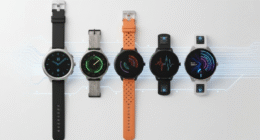Introduction
Real Vs Fake tech matters now more than ever. From viral gadgets to AI claims, distinguishing real breakthroughs from overhyped or misleading products protects your money and your time.
What is “Real Vs Fake tech”?
The phrase Real Vs Fake tech describes the difference between genuine technological innovation and deceptive, exaggerated, or non-functional tech claims. Real tech demonstrates measurable benefits, reliable performance, and transparent documentation. Fake tech relies on buzzwords, unverifiable promises, or staged demonstrations.
How to tell Real Vs Fake tech in products
Look for peer-reviewed evidence, open technical documentation, and independent reviews. Real tech usually has transparent specs and test results. Fake tech often shows cherry-picked demos, ambiguous benchmarks, or marketing-heavy language without hard data.
Red flags that suggest Fake tech
Unclear measurements or vague phrases like “quantum-ready” or “bank-grade security” without specs. Overly polished promotional videos that skip real-world testing. Absence of reputable third-party reviews or academic references.
Questions to ask before believing a claim
1. Can the company provide test data or benchmarks? 2. Is the underlying technology explained in plain terms? 3. Are there independent reviews or academic papers? 4. Does the product have reliable customer support and firmware updates?
Real-world examples (anonymized)
– A device claiming to charge in 60 seconds but with no measurable charging protocol described. – An app promising guaranteed medical diagnoses without clinical validation.
How consumers and professionals should respond
Consumers should demand evidence, seek independent reviews, and prefer vendors with transparent roadmaps. Professionals should reproduce critical tests, disclose methods, and provide open-source benchmarks when possible.
The role of journalists and reviewers in Real Vs Fake tech
Investigative journalism and rigorous product testing help expose fake claims. Trusted reviewers replicate tests, verify results, and highlight inconsistencies, making it easier for buyers to choose real solutions.
Deep dive: technical signals of real products
Real tech will often provide reproducible protocols, detailed schematics, and raw datasets. For hardware, open mechanical drawings, component lists, and manufacturing partners increase credibility. For software and AI, look for published model cards, training datasets, and reproducible evaluation scripts. Transparency about limitations and failure modes is also a hallmark of real work.
Legal and business signals
Legitimate companies register patents, list credible founders, and provide transparent terms of service. Fake operations sometimes hide corporate details or use shell entities. Research the company history, track record of prior products, and any regulatory filings or recalls. Institutional partnerships and known investors can be positive signals but are not guarantees.
Community and ecosystem cues
A healthy ecosystem signals real tech: active developer forums, third-party integrations, and commercial partners. Fake tech often lacks an ecosystem or shows sudden spikes of suspiciously positive reviews. Watch for reviews that repeat the same phrases or come from accounts with little history.
Practical consumer tips
When shopping, prioritize brands with clear return policies and warranty terms. If possible, test products in person or buy from retailers that support returns. For software, use trial versions and inspect privacy policies, data retention, and data export options. When in doubt, ask specific technical questions in public forums — silence or evasive answers are telling.
Closing thoughts
In a crowded market, distinguishing Real Vs Fake tech is essential for both consumers and professionals. Critical thinking, insistence on evidence, and community verification help elevate truly useful innovations and reduce wasted time.









